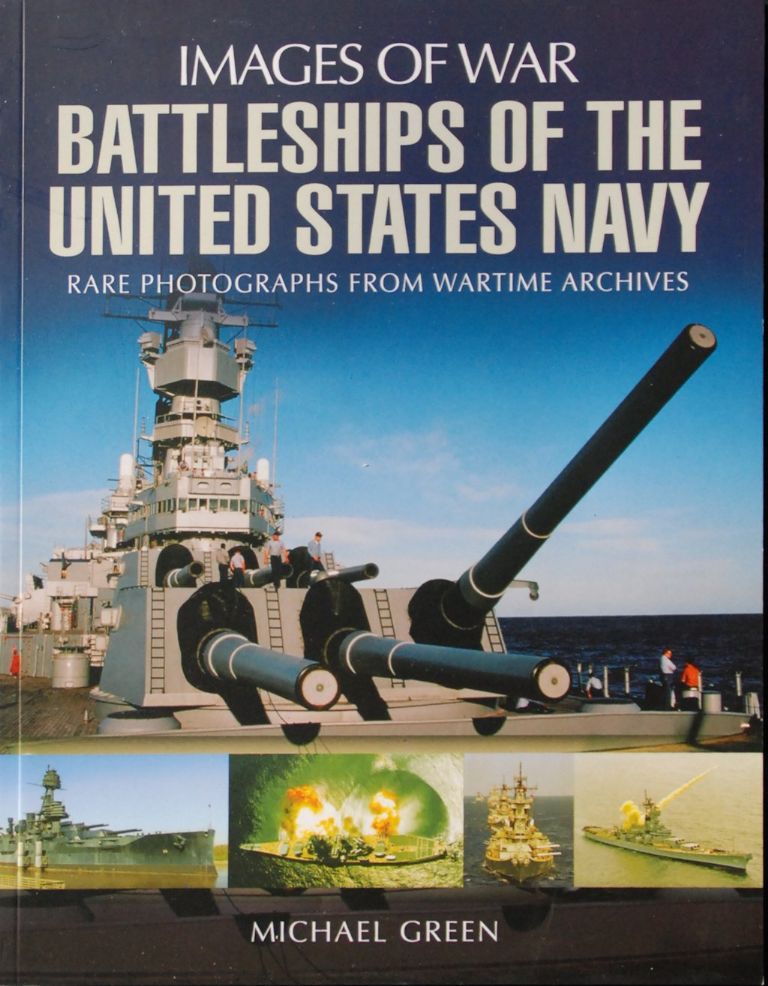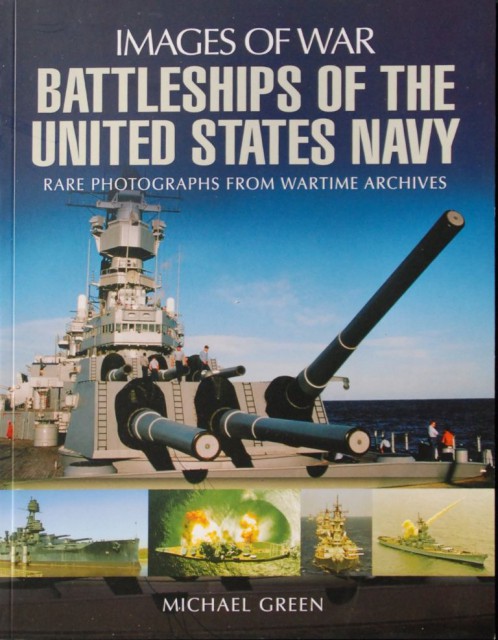I talk to military history professionals and dedicated punters all the time and it is interesting how often I hear reservations about the Images of War range of books. I think it’s fair to say I am a bit of fan as far as things go. Some books are better than others and you see one occasionally that is an absolute winner from first to last. This book by Michael Green is one of them as far as I am concerned.
Given that Britain is where the Dreadnought was born and a with history that takes in Jutland and so much more you might think a battleship from that era would have been preserved in the UK, but they all went to the gas axe and the largest ship in preservation is the WW2 cruiser Belfast on the Thames in London. Cross the miles to America and no less than eight battleships have been saved as museum ships; the Texas, veteran of two world wars; two South Dakota-class ships – the Alabama and the Massachusetts, the North Carolina and the four Iowa-class leviathans – New Jersey, Missouri, Wisconsin and the Iowa. Eight might not seem a lot from sixty-four ships to be adorned with a BB pendant number, but this is an impressive number to have saved and the fact you can visit them all is pretty cool in my book.
This book take us back to the Civil War days of the ironclads and sketches in details of the gradual progress in capital ship design and weaponry until the Indiana and her sister ships were authorised in 1890 and the true battleship era was ushered in. I was surprised to learn that the BB pendant number wasn’t actually introduced until 1920 and the earliest numbers were issued retrospectively. But before all this we see the succession of what were in effect large cruisers and perhaps the best known of these is the ill-fated Maine, the ship that blew up at Havana and gave the US a pretext for war with the faltering Spanish empire.
The book looks at the first American built dreadnoughts responding to the ground-breaking design launched for the Royal Navy and we learn that these first ships were already an improvement on the British game changer and this rule seems to apply almost throughout the battleship story with the advent of the super dreadnoughts that stayed in service until the end of WW2 at a time when the immense fast battleships crowned by the Iowa-class came into service.
We progress through the Great War, a conflict US battleships played a minimal part in, seeing no major engagements before the war’s end. The inter war years were a time of agreements to limit the size and numbers of battleships. This was in response to understanding how the arms race between Britain and Germany prior to the Great War had been the cause so much tension. With limitations agreed it was hoped that sort of madness would never ensue again. Through the twenties and in to the 1930s many older ships received extensive refits almost completely revising appearances as distinctive cage masts gave way to tripods and armaments changed to reflect developments in air power with the placement of anti-aircraft guns.
You might suspect the tragedy of Battleship Row would dominate a book like this, but the news is the awful of events at Pearl Harbor are always kept in context and a lot of effort is taken to explain how some of the ships seriously damaged on 7th December 1941 were raised and reborn in time to play a role in the defeat of the Axis Powers in World War II. Even the pre-Great War veteran Texas is seen on D-Day, hammering German positions. The war prolonged the life of many ships that might have gone to the scrapyard much earlier and huge efforts were expended to modernise and keep them fit for an increasingly modern form of warfare, but one where a good old-fashioned big gun broadside still had an impact.
Long after the war when other nations had consigned their battleships to razor blades the US Navy had the foresight to keep the last of hers in case a time came when they could add a little punch. This came in Vietnam, the Lebanon and in the 1991 Gulf War and I remember a classic night shot from then showing the Wisconsin firing cruise missiles on positions in Iraq. The newspapers I worked for then had just gone over to an all colour layout and an azure sea lit brightly by the flames of the missiles as they streaked away is something I can’t forget; even if it was just a wire photograph we could print out using the only computer we had in the office back in those heady days.
Michael Green has produced a really fine book. The archive photos are exceptional and the text explaining the beginnings of the US Navy battleship era and the multitude of classes that followed in service from the turn of the 20th Century until recent times flows really well and gives us a great deal to go on. It’s the sort of package we might expect to see in one of those big glossy Seaforth books and I wouldn’t be surprised if something like it with considerably more depth in technical matters did appear at some point.
From my photo archivist’s perspective the images are really superb and with good quality captions they all make sense. The book hasn’t just been thrown together and forms into a narrative that really gets things right. I am very impressed with this book. It has helped me learn a lot more about the US Navy and I have taken this a little further with time spent reading internet articles and so on and I am always pleased when books leave me with more questions than answers. Great stuff.
Reviewed by Mark Barnes for War History Online.
BATTLESHIPS OF THE UNITED STATES NAVY
By Michael Green
Pen & Sword Maritime
ISBN: 978-1-78303-035-4

